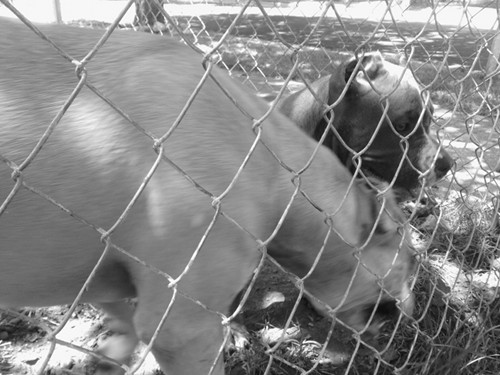Puppies in a corner lot on a sweltering day. No water in sight. Little bodies panting, seeking shade, digging earth, but finding no relief. Their tongues eagerly lap water from the bottle I pour through links of the fence, its gate closed but not locked. No collars, nor caretakers.
Unending opportunities present themselves for extending compassion and love. A popular way to call some version of this is “random acts of kindness.” Here “random” may imply a chance encounter or an indiscriminate thought like, “Oh! I’ll do something nice for a stranger.”
During an hour keeping company with the little ones, I phone Animal Control three times, before and after chats with kids who can’t get into the house either. The operator explains how only one truck works between the two for the entire county.
What if acts of kindness involve listening to one’s inner voice, registering that something is off, and responding “in kind”? A synchronicity of spontaneity and intention. Taking care of what crosses one path as best as one can. In other words, compassion as custom-tailored action — attentive and variably shaped to the situation.
I am waiting for someone to come, despite somewhere I am supposed to be, when the eldest child returns with a key. Having warned him about the dangers of heat, he promises to keep the dogs inside tomorrow, again forecasted to be extreme. But the next day, I find the pups outdoors with a snow sled full of water.
Just as variably, acts of kindness may place us in crosshairs, as depicted by the movie “Pay It Forward.” A child intervenes to protect a peer, and the third child stabs the former rather than the latter. The mediator did not intend to be a martyr, just as risky compassion does not revolve around savior-hood. Yet there is tension between reaction and thought, for dynamics are unstable and outcomes uncertain.
A different operator answers my call to Animal Control. I repeat the scene, and am told that the address was visited. It seems the new call is bundled with the old. Yet the little ones still are panting without end, without collars, behind an unlocked fence.
So ponder risk as a root of compassion, for in acts of kindness we un-armor our hearts, minds, souls, bodies. By extending tenderness to one another, we also embrace our self. The tender touch does not wax contrary at every turn but encircles difference, inviting but not imposing to bring together what lies between.
As I ready to leave, a man pulls up and exits his car. I greet him with a smile and hand, “Hi, I’m Melissa. Maybe you heard from the kids how I watered the dogs.” He shakes hands but offers no name or smile, commenting how there’s always a bowl of water. Yet the day before, the kids found it empty on the porch.
Compassionate community is a daily, face-to-face practice, not a pie-in-the-sky ideal. We are in relationship whether or not we know each others’ names. Ultimately, how we take care of one another shapes ourselves as well as the world we share.


